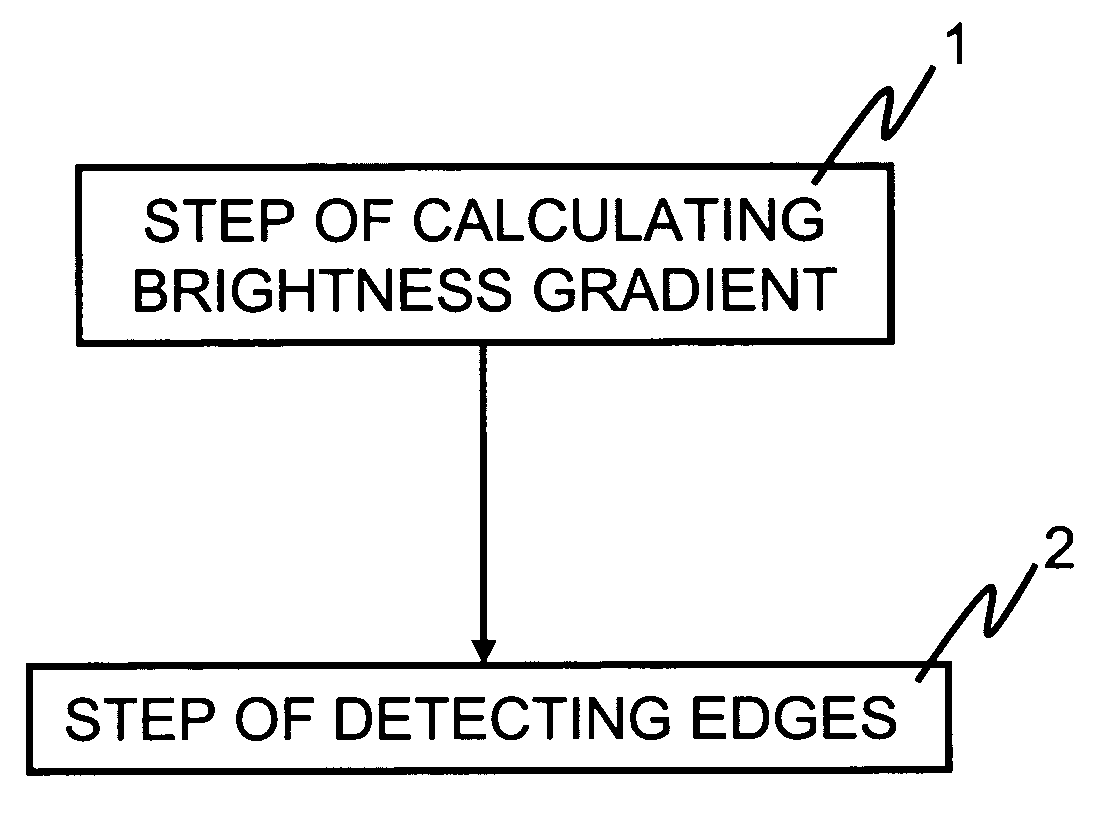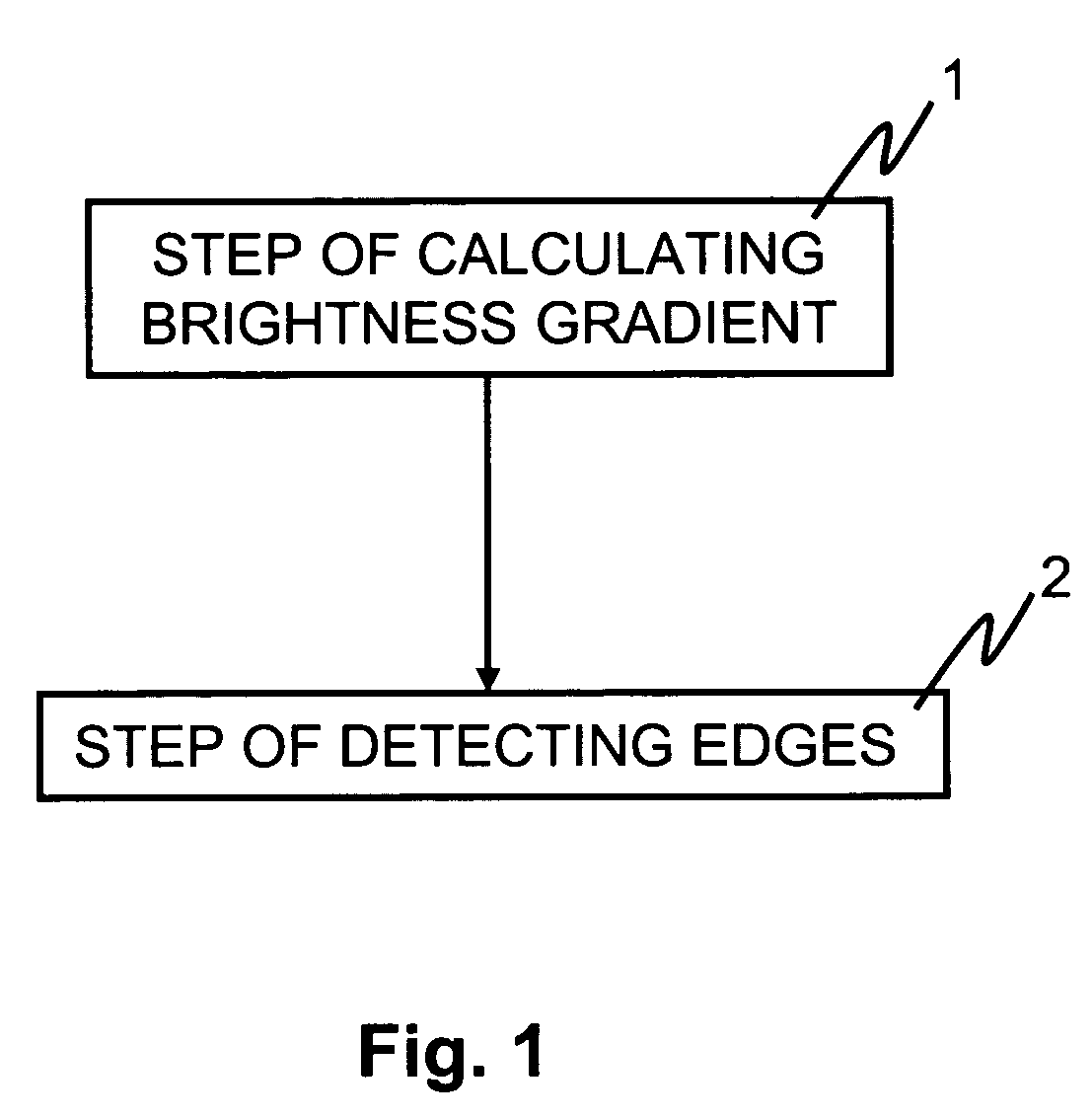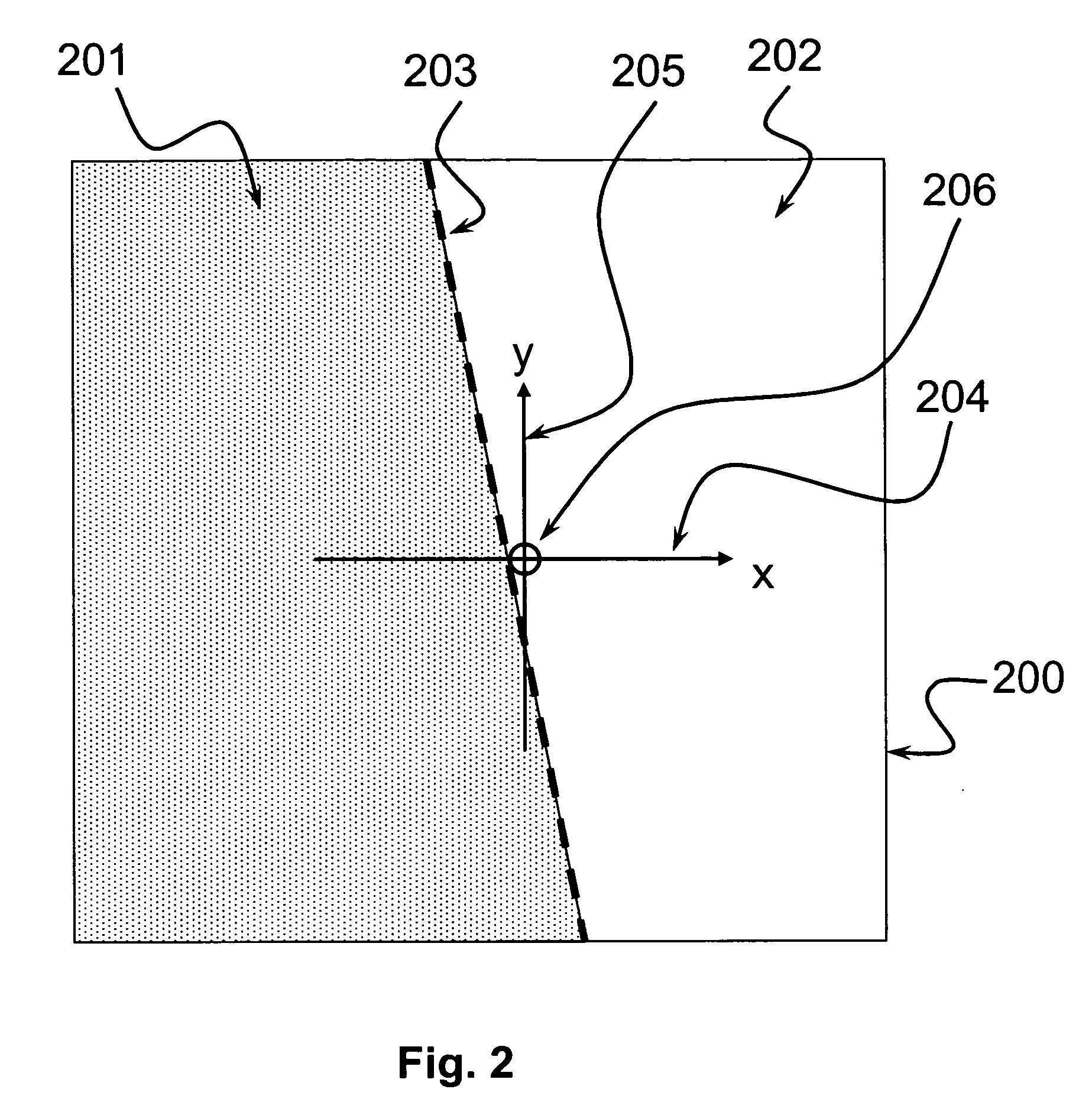Image processor, method, and program
a technology of image processing and edge detection, applied in the field of image processing, can solve the problems of difficult to detect the correct edge set, high labor intensity in processing multiple images, and easy to affect the edge detection techniques relying on currently known methods
- Summary
- Abstract
- Description
- Claims
- Application Information
AI Technical Summary
Benefits of technology
Problems solved by technology
Method used
Image
Examples
first embodiment
[0031] An image-processing method associated with a first embodiment of the present invention is described. The image-processing method of the present embodiment may be implemented as a program operating, for example, on a computer. The computer referred to herein is not limited to a PC (personal computer) or WS (workstation). For example, the computer may be a built-in processor. For example, the computer may include a machine having a processor for executing a software program.
[0032]FIG. 1 is a flowchart illustrating an exemplary process for detecting edges by an image-processing method. In step 1, a brightness gradient is calculated. Next, in step 2, edges are detected. Furthermore, step 2 includes a process for estimating local noise and for determining whether the local brightness gradient is significant with respect to this estimate. In particular, referring again to step 1, to calculate a brightness gradient, the method determines brightness gradient values in an edge direct...
modified embodiment 1-1
[0048] The brightness gradient value in a direction perpendicular to the direction in which the brightness gradient value maximizes may be used as the minimum value ∇I(θ+π / 2) of the brightness gradient values. That is, the maximum value ∇I(θ) is determined from brightness gradient values in a plurality of directions. It can be assumed that the brightness gradient value in the direction perpendicular to the direction in which the brightness gradient value maximizes is the minimum value ∇I(θ+π / 2) of the brightness gradient values.
modified embodiment 1-2
[0049] The brightness gradient value in a direction perpendicular to the direction in which the brightness gradient value minimizes may be used as the maximum value ∇I(θ) of the brightness gradient values. That is, the minimum value ∇I(θ+π / 2) is determined from brightness gradient values in a plurality of directions. It can be assumed that the brightness gradient value in the direction perpendicular to the direction in which the brightness gradient value is minimized, is the maximum value ∇I(θ) of the brightness gradient values.
PUM
 Login to View More
Login to View More Abstract
Description
Claims
Application Information
 Login to View More
Login to View More - R&D
- Intellectual Property
- Life Sciences
- Materials
- Tech Scout
- Unparalleled Data Quality
- Higher Quality Content
- 60% Fewer Hallucinations
Browse by: Latest US Patents, China's latest patents, Technical Efficacy Thesaurus, Application Domain, Technology Topic, Popular Technical Reports.
© 2025 PatSnap. All rights reserved.Legal|Privacy policy|Modern Slavery Act Transparency Statement|Sitemap|About US| Contact US: help@patsnap.com



